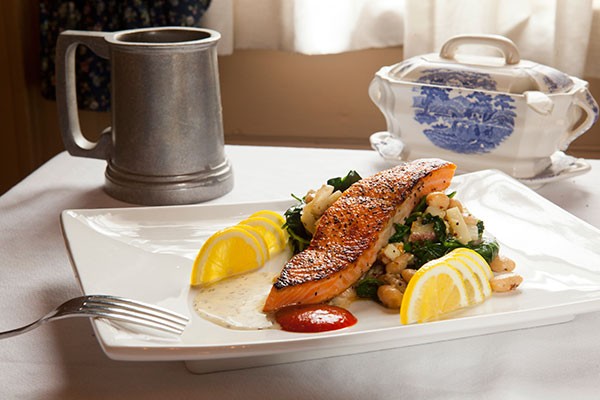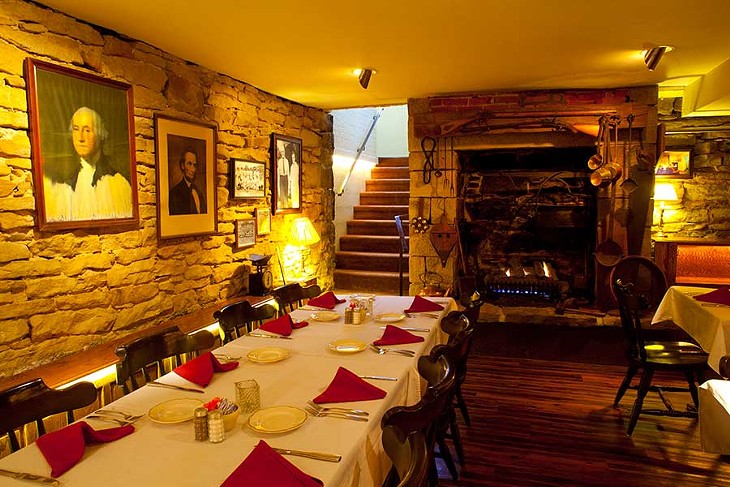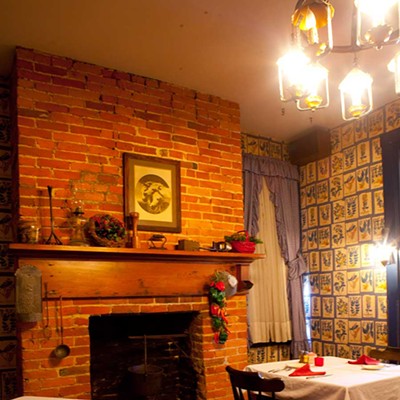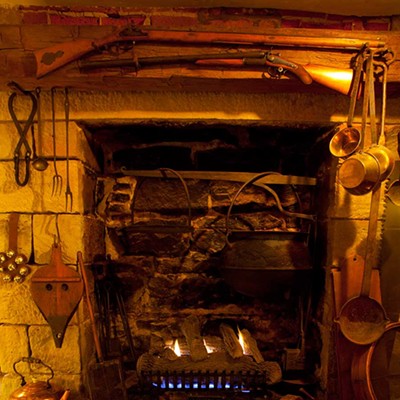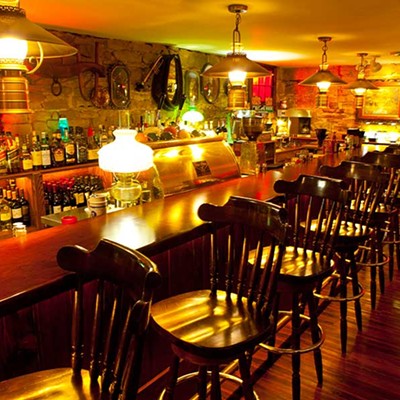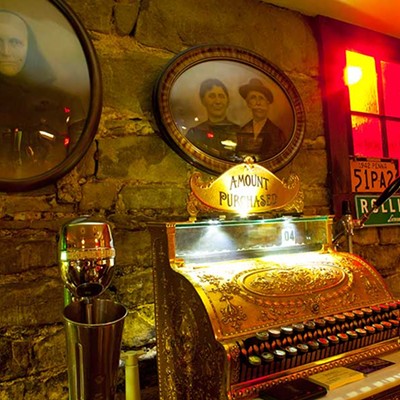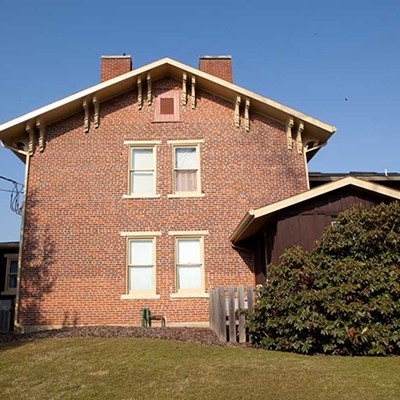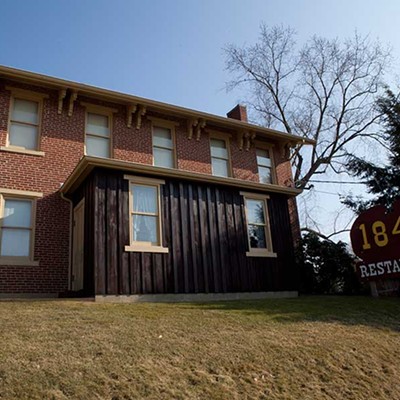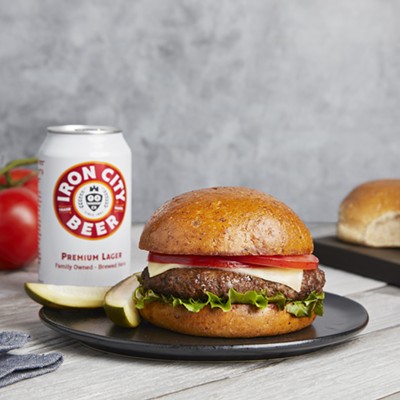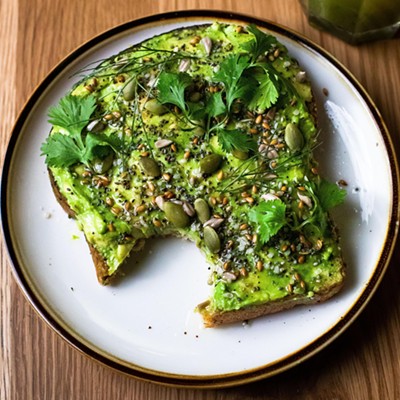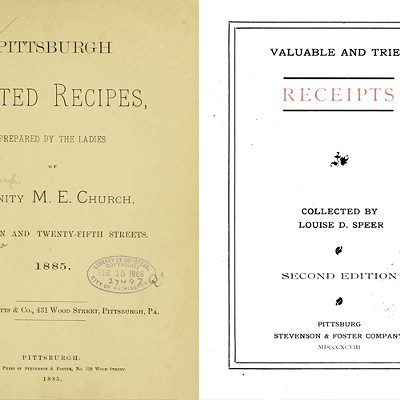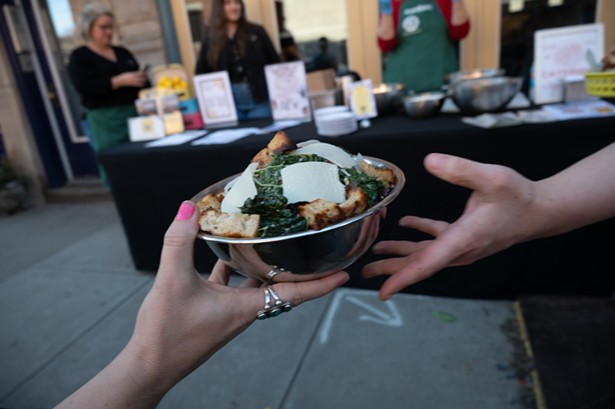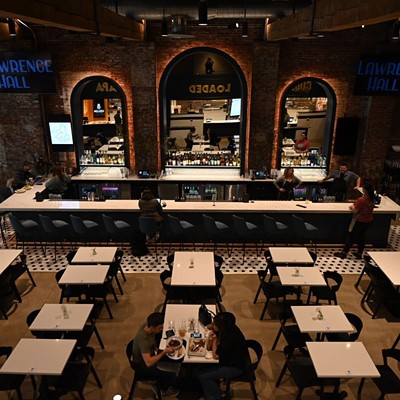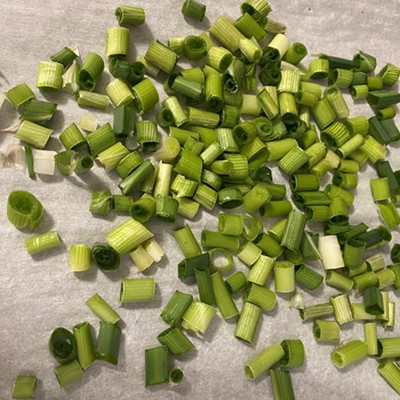Running a restaurant is, famously, a tooth-and-claw business. Many establishments, even good ones, stay open only a few years at best. A generation of service is almost unheard-of ... until you get to Leechburg, a charming town north of Pittsburgh. There, in a restored farmhouse on State Route 66, 1844 Restaurant has been in operation for 40 years.
Though this is an eon in the lifetime of a restaurant, it is just a blip in the age of the premises. The name 1844 commemorates the oldest recorded tax assessment for the farmhouse, which is probably older still, and occupies a land grant conveyed in 1756. Over the decades, its small but gracious rooms have sheltered families engaged in fruit farming, harness horse racing and, since 1974, running a restaurant that, back in the day, specialized in prime rib.
Prime rib is still on 1844's menu, but today there is so much more. The restaurant is still owned by its original proprietor, Robert Gorelli, but his son — who grew up in the business, then traveled — has returned to bring fresh ideas to the kitchen. As a result, 1844 offers an unprecedented patina of tradition combined with a sure-footed sensitivity to 21st-century tastes.
The menu's modern updates are exemplified most starkly by the sushi rolls and sashimi platter, but even these come full circle to the restaurant's beginnings: The "1844 roll" pairs wasabi and alfalfa sprouts with prime rib and smoked Gouda cheese. Shrimp cocktail sounds like a dish that would have been on the menu in 1974, but probably not in the current, Mexican-inspired version starring sofrito lemon sauce. For the most part, 1844's modernization of its classically continental menu is subtle, but there is occasional innovation: The combination of tempura shrimp with orange cayenne, diced cucumbers and bleu cheese is unusual, to say the least.
We started with an item that was new to us, but seemed traditional: mozzarella en carrozza, which is essentially a croque monsieur made with cheese, basil and whole-wheat bread, dipped in egg yolk, pan-fried and served with roasted red-pepper reduction. Like the world's most sophisticated grilled cheese, it featured crisp edges and a stretchy, creamy filling, while the reduction contrasted this richness with a refreshing zing of spice.
A dining companion ordered the sashimi platter and was slightly disappointed that the "variety" promised on the menu was limited to wild New Zealand salmon. But, he was not in the least disappointed by the silky, fresh-tasting fish: sushi grade, indeed. The same fish recurred in Jason's salmon roulade, slices of filet wrapped around lump crabmeat, baked and finished with garlic cream. This preparation resulted in salmon that was slightly overdone: Higher heat and briefer time in the oven might have improved it. But the combination of rich salmon and sweet crab was classic, and the cream sauce featured a pleasantly mellowed garlic base, with counterpoint provided by plenty of cracked black pepper.
Greens and beans featured complex savory and umami flavors that belied a dish made with little more than cannellini beans, spinach (in place of the traditional escarole) and parmesan cheese. Another Italian standard — pasta in vodka sauce — came with a skewer of grilled Alaskan scallops. Though these were a little bit fishy-tasting, the slightly chunky tomato reduction was deeply flavorful and satisfying.
Ordering a child's portion of prime rib may have been a mistake: The thin slice struggled to offer the meatiness of a traditional cut. But we did get to taste the superiority of the chef's rosemary jus reduction, which was thicker and more flavorful than the standard, watery jus. Rosemary also appeared as a garnish atop the mashed yams, which tasted less like candied baby food and more like an excellent roast squash. Sautéed asparagus, a delightful harbinger of spring, was tender-crisp and just right.
Our enjoyment of all this food was only heightened by consuming it in the basement Keeping Room, a former root cellar which now houses a bar and dining room dominated not by flat-screen TVs, but by a massive stone fireplace. This, plus mellow lighting and warm service, made us want to linger long after our meals were finished, perhaps with a nightcap at the bar. Here's to another 40 years.

